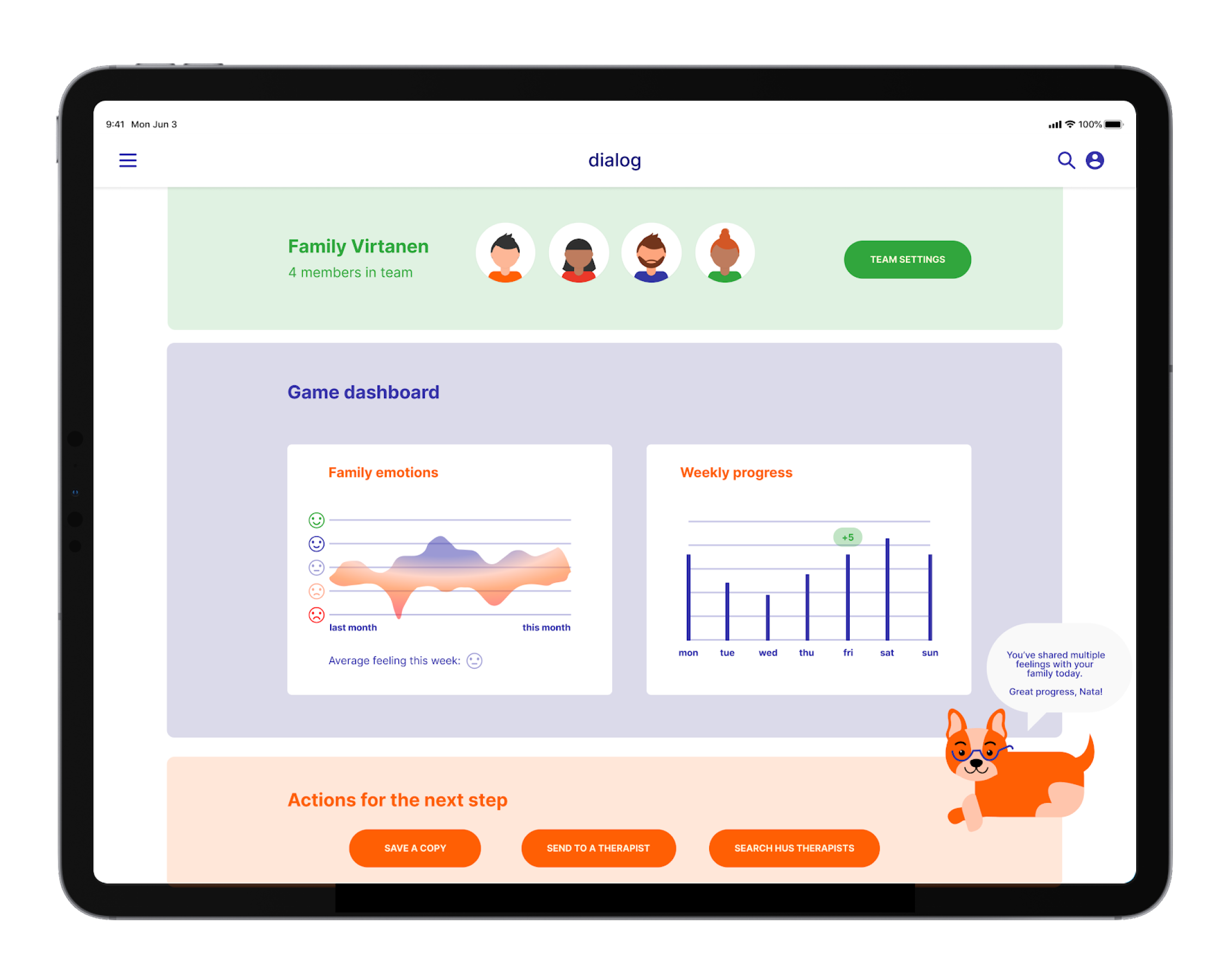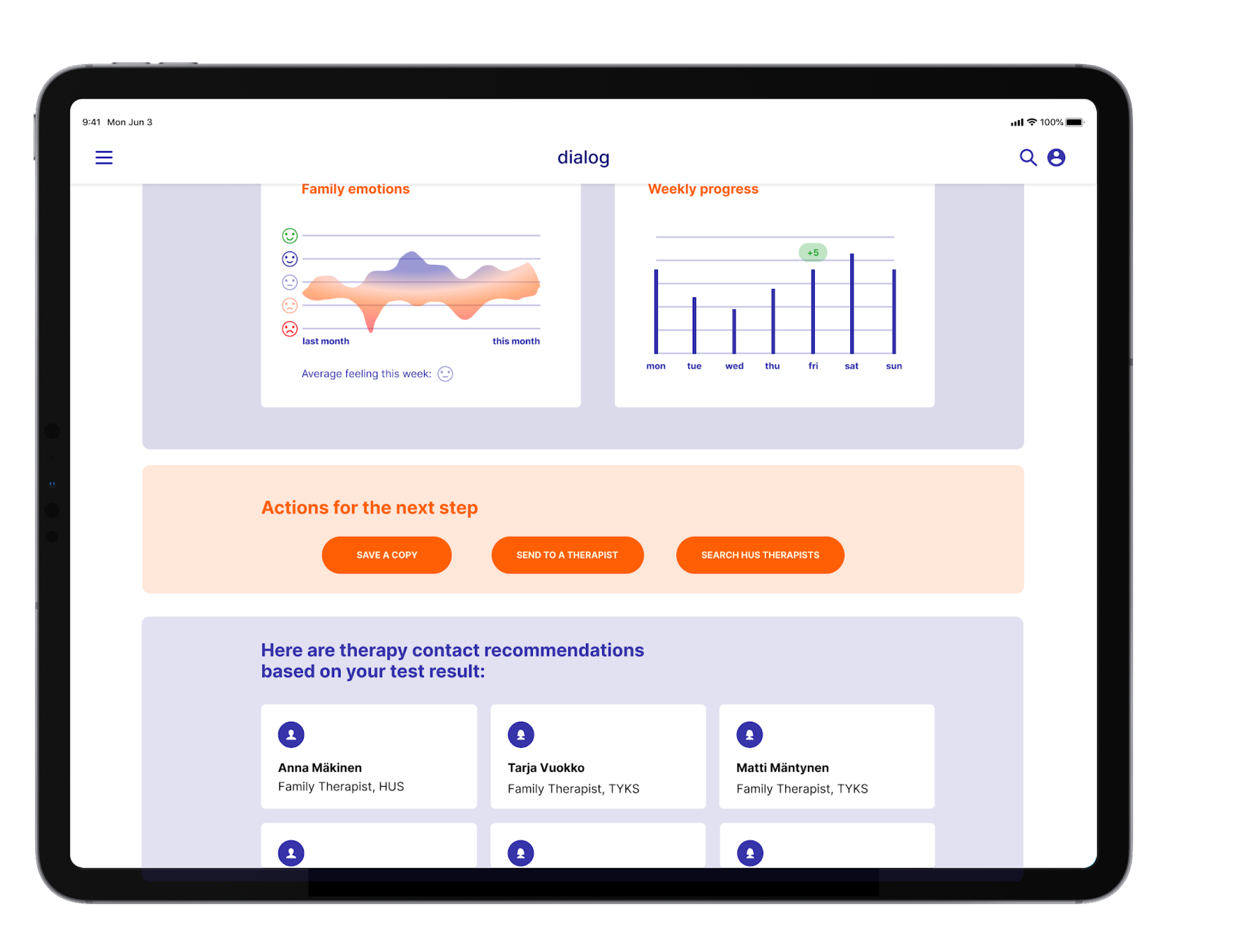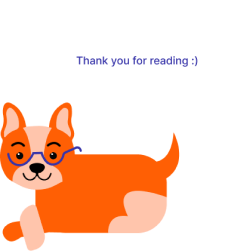Concept design x Design strategy
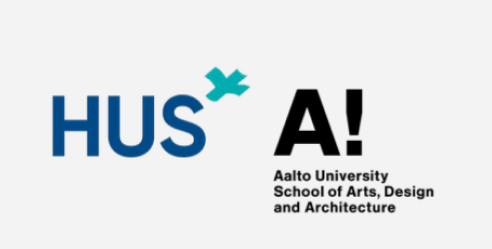


Secondary and primary research conducted with key stakeholders
Analysing the research data with stakeholder charts and journey maps
Identifying the key opportunities and pain points to be addressed
Collaborating with families to ideate and brainstorm on possible solutions
Identifying the key use cases and detailing out the final designs
The project started off with a comprehensive project planning foundation. As a team, we established milestones, meetings, and a division of key tasks by role and level of completion. This was a vital and helpful project start for all members to be able to stay updated, especially when working in distributed remote teams.

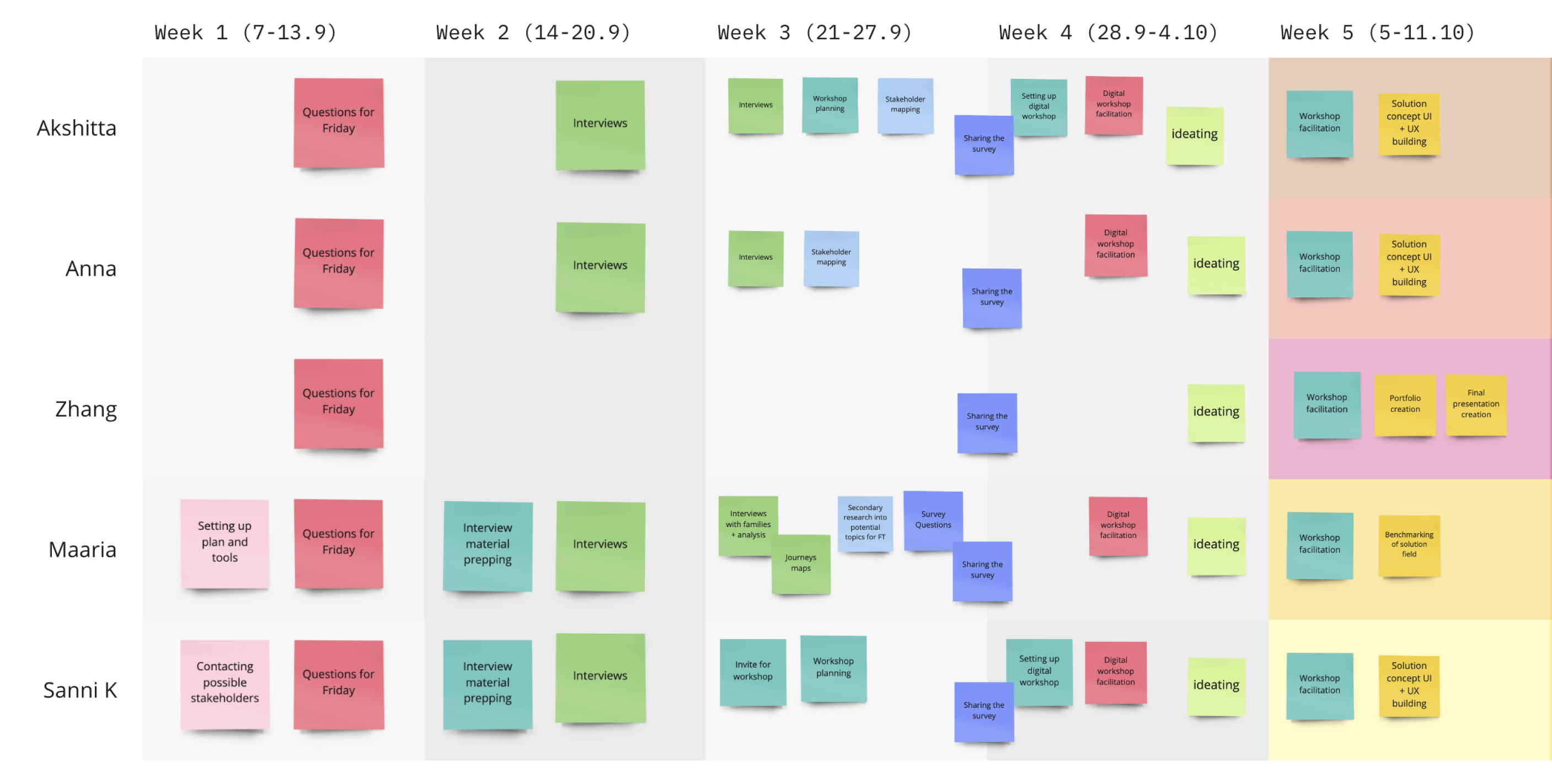
We started our primary research by identifying the types of users we wanted to interview. From our secondary research, we identified therapists and families as the primary user groups to go after. Below is a small diagram to depict the profile and distribution of our participant list.
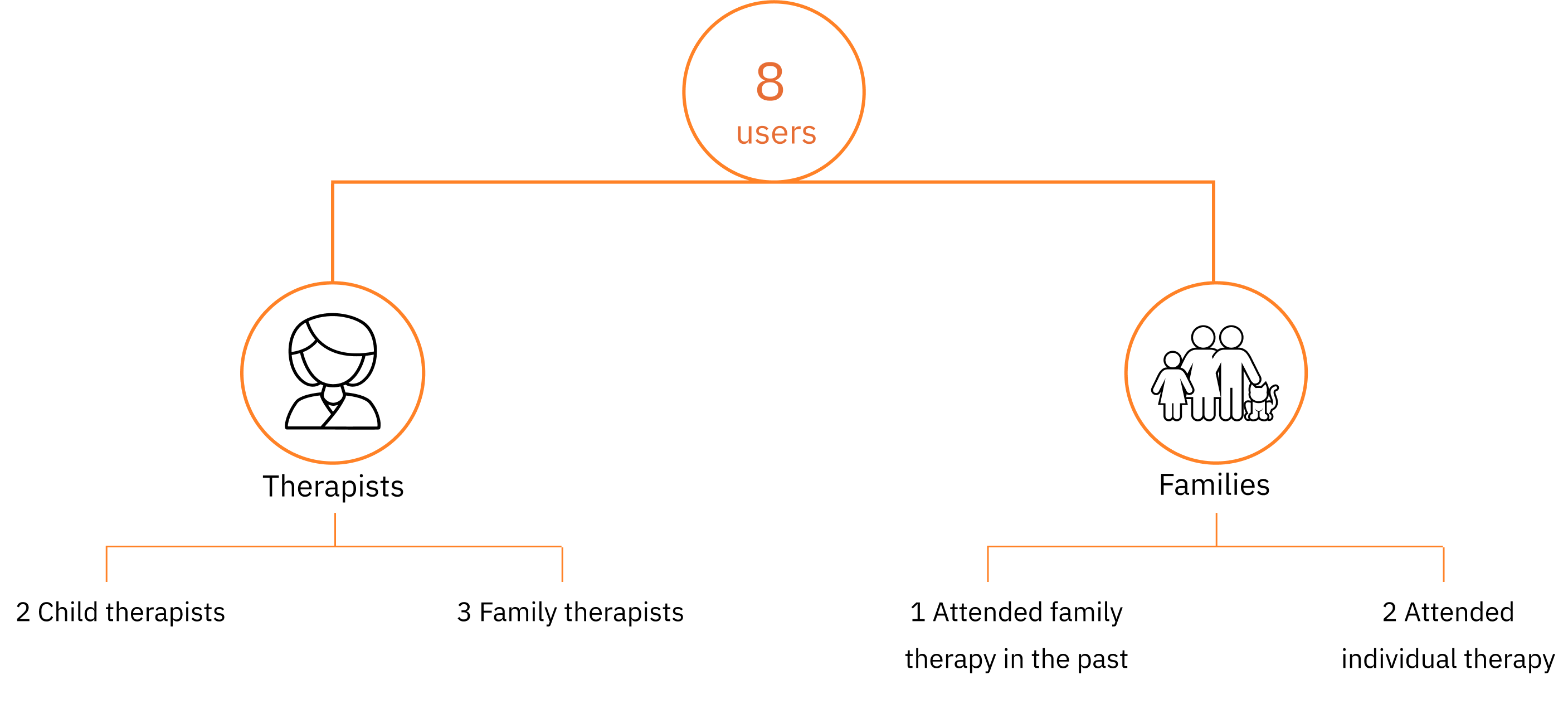
User Acquisition: We primarily acquired users through social media platforms like Instagram, Facebook and Linkedin. Specifically for therapists, most participants were acquired through extended contacts with friends and family. We followed up with a formal email invite to ensure their confirmation for the interview.
Interview preparation: We established a very carefully thought out and prepared user research protocol and co-created in-depth questions and probes to ask the participants. The intent was to understand their entire journey from identifying the problem, approaching it and the process during and after therapy.
Conducting interviews: The interviews were conducted over Zoom, Teams and WhatsApp call. Each interview lasted from about 45 mins to 1 hr.

" It’s okay to seek help, it does not mean failed parenting. Getting help is the wise thing to do."
Family therapist, Helsinki
Cultural stigmas make people less likely to seek help. In Finland, there is a pressure to present as a happy family, and solve problems on one’s own. Seeking help is associated with failure.
Family members are not equally motivated and willing to discuss sensitive topics. Setting shared goals for therapy might be difficult, if family members perspectives vary greatly.
Parents or other family members feel that only the person with the most immediate problem needs therapy. There is an initial preference towards solving problems with individual therapy or medication.
Family members are not equally motivated and willing to discuss sensitive topics. Setting shared goals for therapy might be difficult, if family members perspectives vary greatly.
If the family is not already receiving public sector help, the path to therapy can be long and difficult. Getting KELA reimbursement for FT is more difficult than for individual therapy.

" Are we really in a bad situation? Don’t all families fight a lot? "
People feel that their problems are not severe enough to warrant professional help. There might be guild about “taking up resources” from others in need.
There might be discrepancy in family members’ or couples’ motivation to start therapy.
Many initially question the usefulness of outside perspective. Enduring a difficult situation might feel easier than going through the effort for uncertain outcomes.
In public sector, there is not a choice between therapists, so their approach might be incompatible with the users’ needs. The user often does not know what kind of help they wish for, or doesn’t dare to express their hopes.
Affording therapy can be problematic. It might be seen as a “luxury” service
There is little information available of service providers, in particular of third sector services.
The image of family therapy isn’t inclusive and drives away families looking for genuine help.
The relationships of the stakeholders were plotted on an emotional basis; closeness to the individual and their ability to make an impact. The outermost circle also has the organisations that the individuals and families came across in their journey of seeking help.
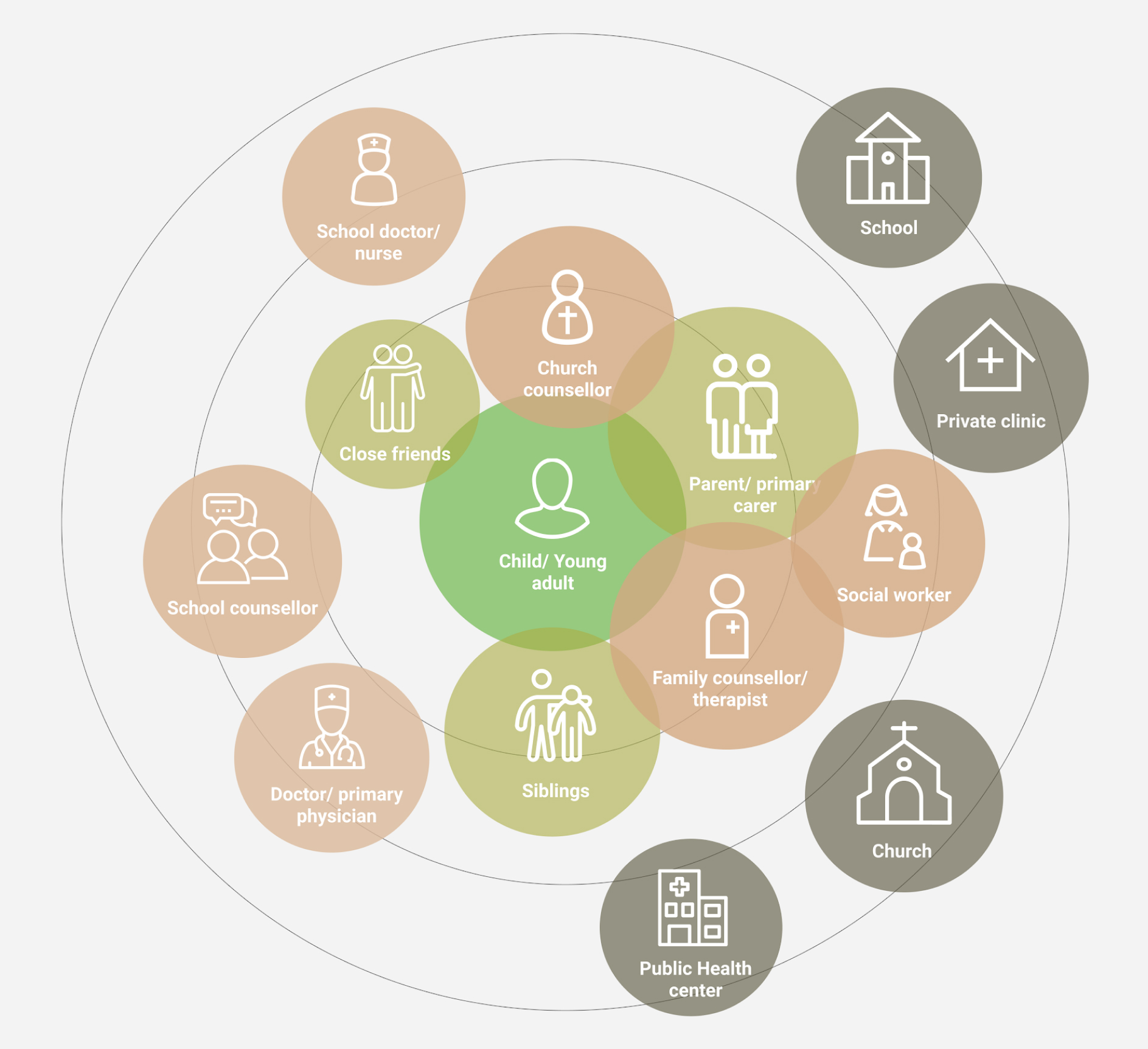
We realised that the problem of accessibility affects the families directly, and so started plotting the therapy journey from a family’s point of view, progressing from problem identification to seeking the right kind of help to post-therapy actions.
Identifying pain points and deriving opportunities from the journey of a family through the process of family therapy
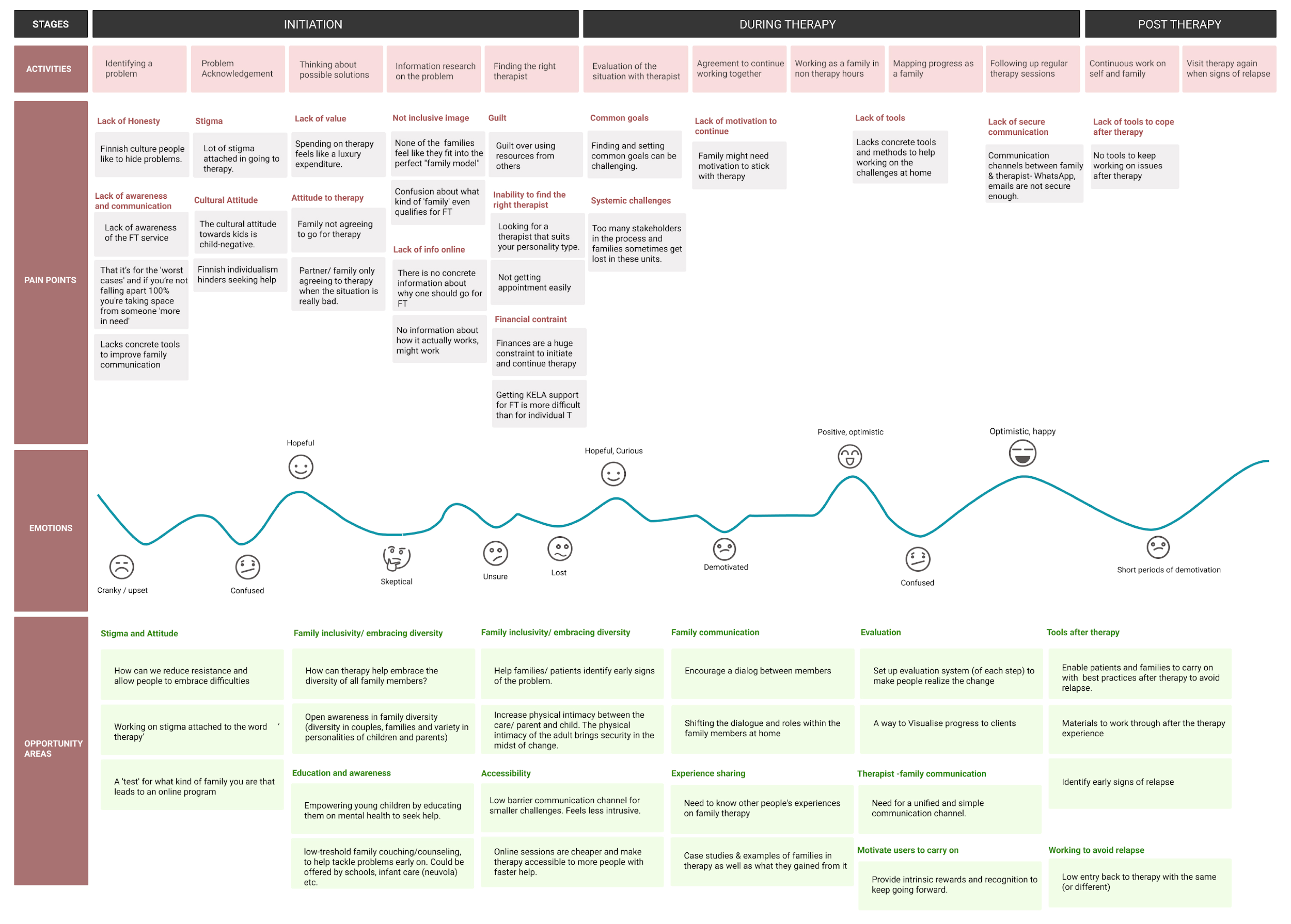
We grouped all the pain points and opportunities into similar buckets and then started voting as a group on opportunities/pain points we felt were most critical to address.
We ruled out the more systemic problems. While there is much to improve in the availability and accessibility of therapy in the public sphere, we wanted to design for solutions, that do not require political decision-making.
Based on team voting, accessibility of family therapy emerged as a primary bucket to focus on.

After closing on the primary opportunity, we decided to organise a co - creation workshop to ideate with the users and also get more ideas on their perception of various available services in the public and private domain. We decided to go with families as our primary users for the workshop as they were at the core of the problem and it was important to get their perspective on the possible solutions.
We worked on workshop invites for families. Most of the families that joined were also a part of our qualitative research and hence it also gave us a good space to take their shared insights forward.

We carefully planned and organized an asynchronous, digital workshop in Miro. Invitations were sent to our interviewees. Four individuals from different families participated in the workshop.
The workshop included elements from our secondary research (e.g. features from other websites), competitor analysis and prioritising of pains and solutions.
The goal of the workshop was to collate users’ ideas, desires and opinions, and use those to move towards solutions.
Each participant was given their own board. First, they were greeted and explained the principles of maneuvering and using the board. Following was a little task, that told us their relationship to therapy.
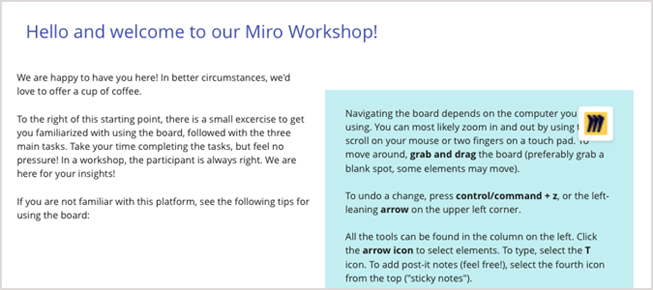
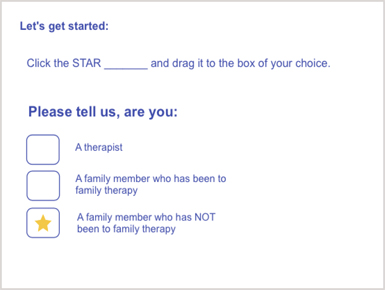
In the first activity, we asked the participant to read through problems concerning the accessibility of therapy. Then, we introduced a scenario, the eating disorder of a young girl, and asked the participant to ideate possible solutions to the situation while keeping in mind the problems.
In the second activity, the participants were introduced to a user journey: with the help of a website, a family finds information of FT, contacts a therapist, and gets to start therapy. The participants were asked to picture this website and mark the features they would want it to have, or come up with on their own.
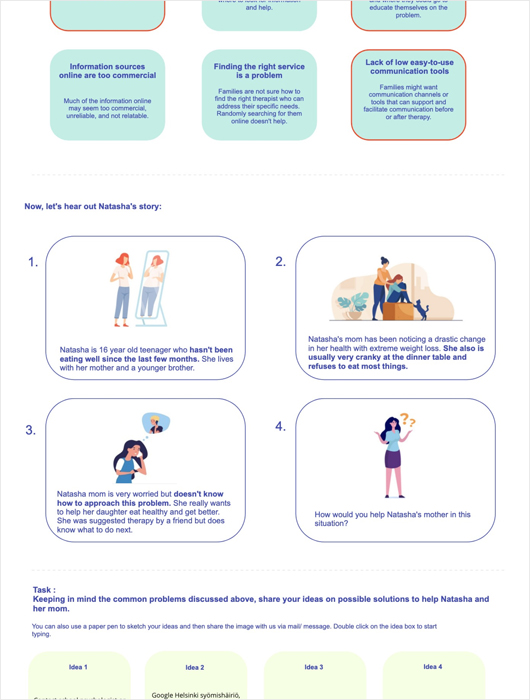
Co-design Activity 1
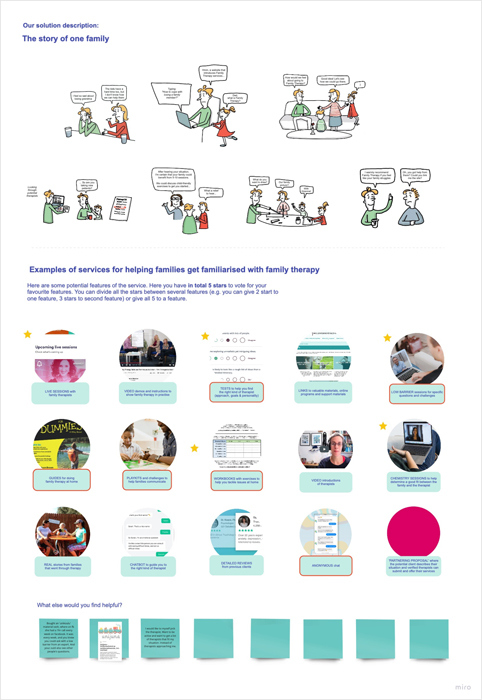
Co-design Activity 2
In the final task, the participants were asked to visit one of the mentioned popular mental wellbeing sites in Finland, and describe what they liked about the site, and what they would improve.

Task 1. Most of the ideas from the first activity were leaning towards ways and solutions to improve the communication between the family, especially the parent and the child.

Task 2. The most popular features were: live therapy sessions, low barrier single sessions, playkits to aid communication, real life stories and guides for DIY therapy. They also suggested shared peer experiences of different types of therapy, and chat-based guidance with finding a therapist.

Task 3. When visiting the benchmark sites, the participants preferred: clean, simple and informative layouts; relatable, clear language; having plenty of information available, also in video format; seeing the therapists’ available time slots; real life stories from users: bots offering help; having a crisis hotline.

Solution statement
After defining our core area of focus, we did a small brainstorming session within the team to align and organise all the ideas that came from the workshop and build on top of those ideas. We grouped all the ideas into similar buckets and voted for the most popular ideas as a team.

Identified 4 key goals that led us to our solution.

We wanted our service to have a tone that is credible to adults, and relatable to children.Both the visual and textual style should be approachable and likeable, without losing the context-appropriate feel.
The people who would benefit from the service will approach it with many different states of mind, so the tone of the service should be neither overly cheerful nor dead serious. Compassion is the key.


Dia-logi is a campaign and a digital platform aimed for families and couples living in Finland.
Dia-logi aims to increase individual and interpersonal understanding within a family, and encourage the family to work through their problems as a unit. The platform can serve both as a low-barrier stepping stone to mental wellbeing services, or as a source of tools for self-help.
Examines and evaluates the family’s mental well-being
Provides tools for awareness and enhanced communication
Helps families acknowledge the problem by involving all family members in the process
Warms them up to the idea of talking to a professional and approach therapists or third sector service providers
Examines and evaluates the family’s mental well-being
Provides tools for awareness and enhanced communication
Helps families acknowledge the problem by involving all family members in the process
Warms them up to the idea of talking to a professional and approach therapists or third sector service providers
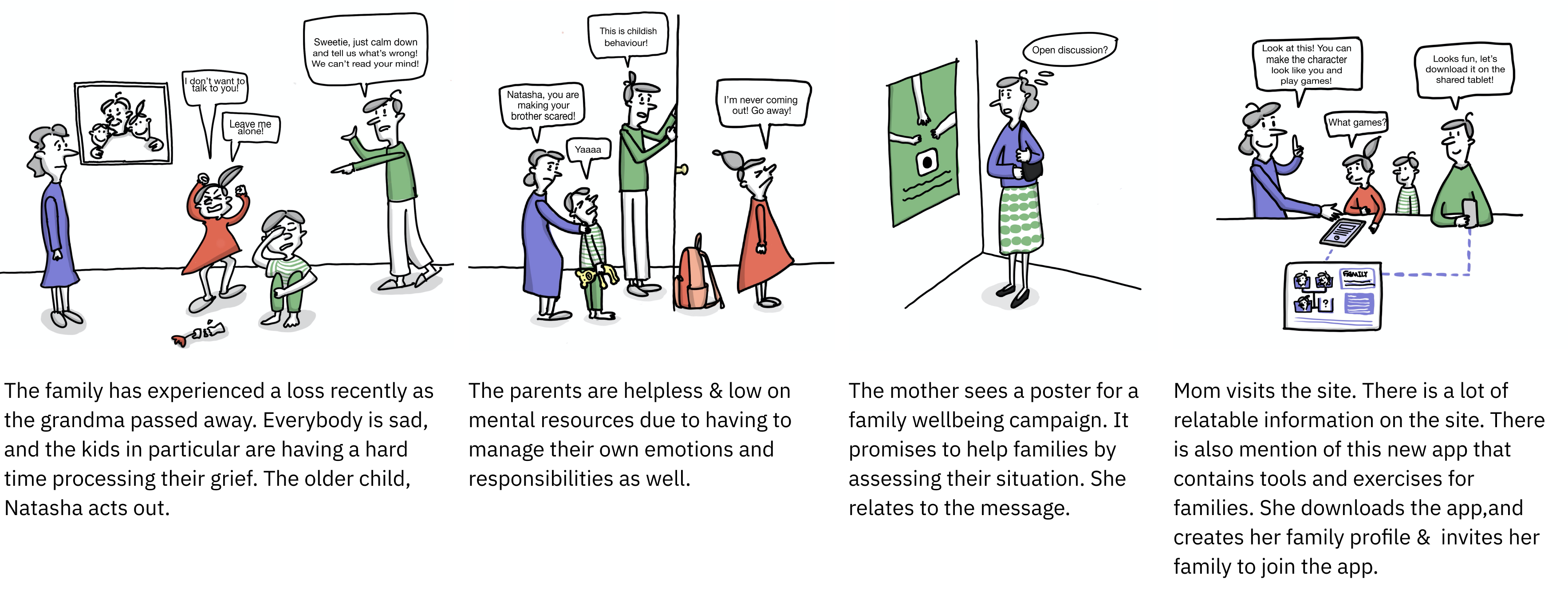
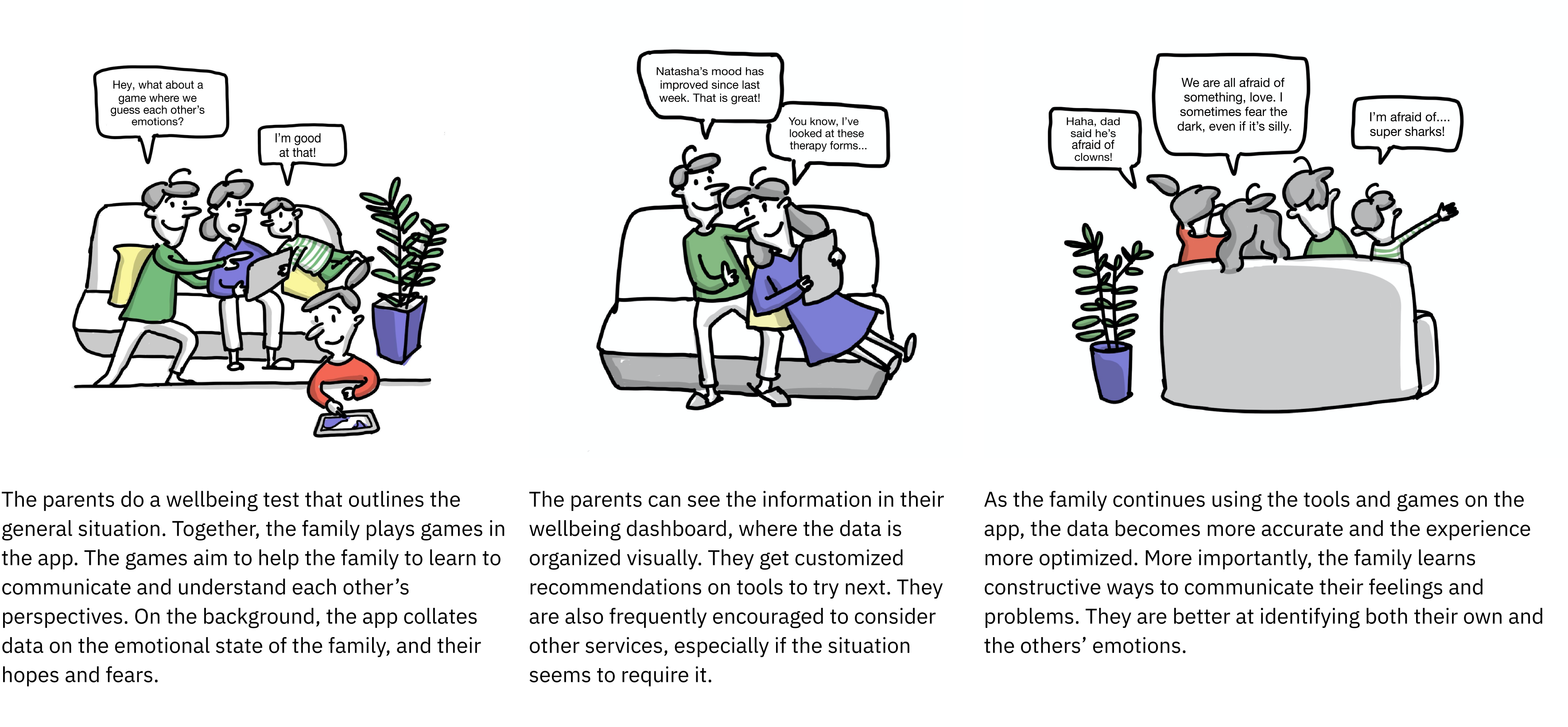
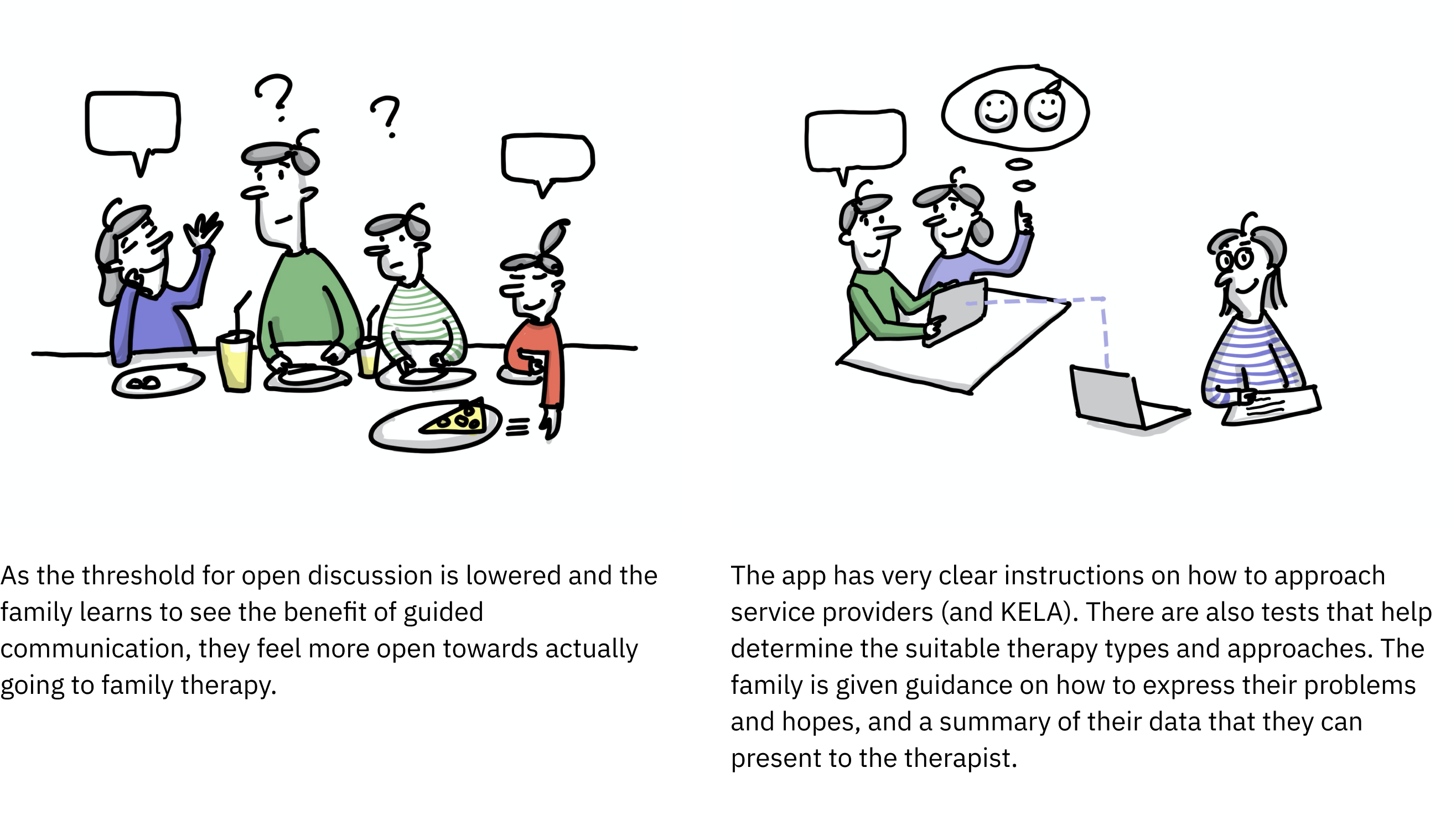

The first initiation phase of dia-logi includes public space campaigns that are meant to probe people towards the dia-log website. The idea is to create curiosity and have people look up the site. This will lead people from a place of curiosity to a place of awareness. These campaigns would be followed up with talks / events in schools, workspaces and other public spaces.
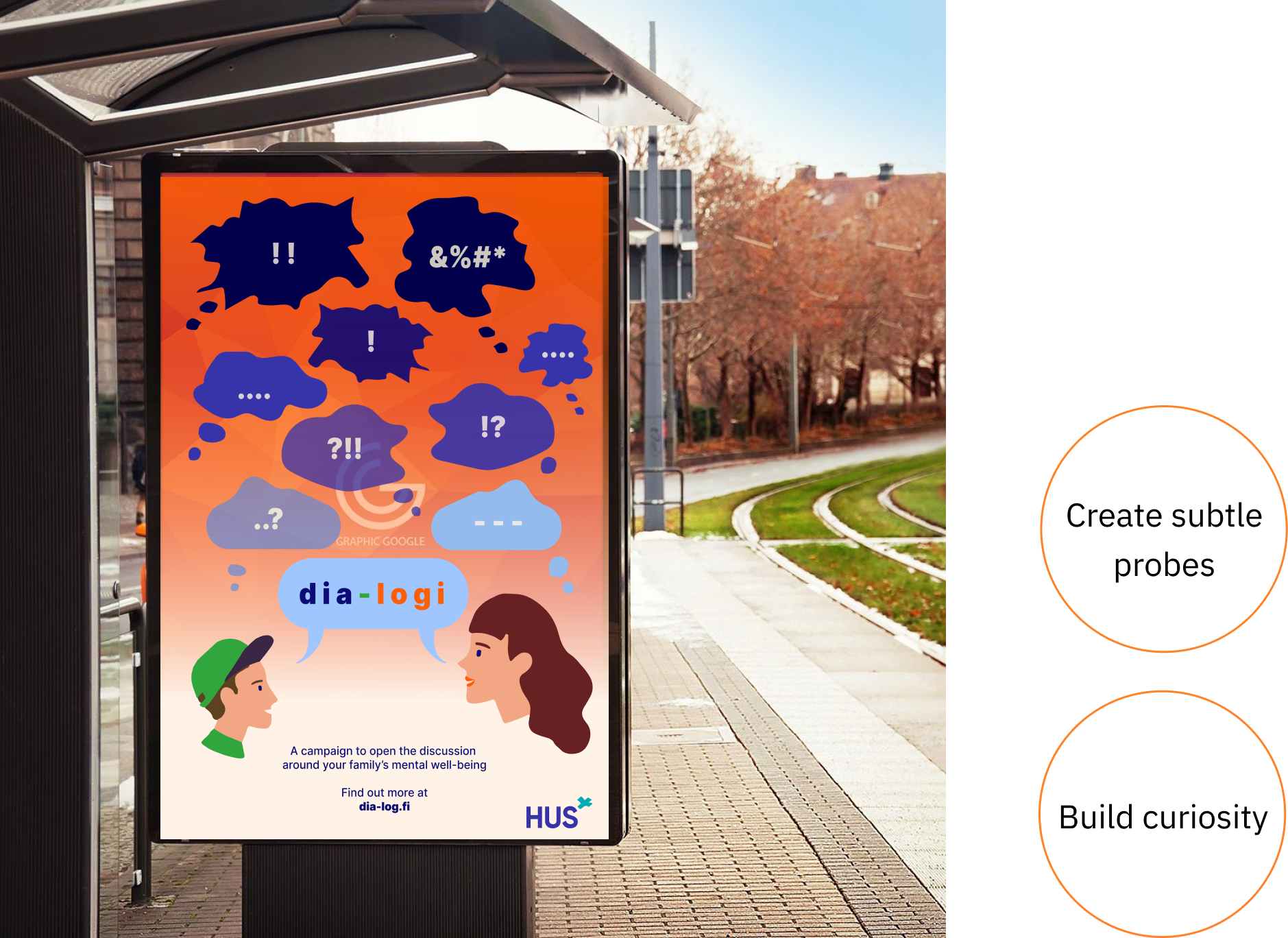
The second phase of dia-logi includes the users going to the dia-logi.fi website, or finding it by an online search (search engine optimization or advertising may be used) and exploring the contents. The website aims to achieve three things:
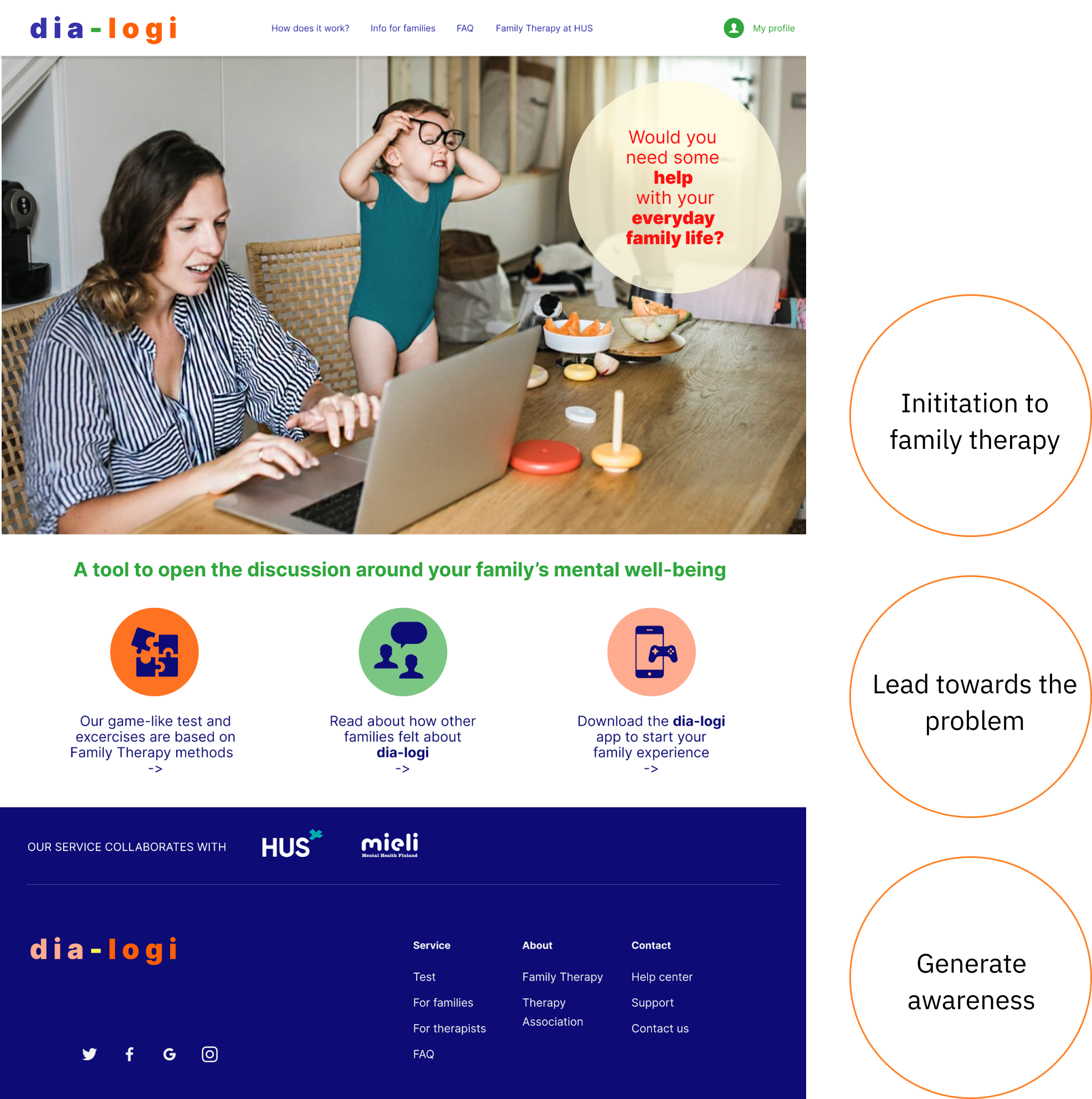
The third phase of dia-logi includes the dia-logi app onboarding experience and the family profile creation. The users can create a representation of themselves, and otherwise personalize the experience. Children in particular will enjoy crafting their look. This step enables the app to capture basic user details, understand the user intent and also bring family members on board. This also determines the kind of content that is recommended to the user.
The functions are presented clearly and in simple terms. At the beginning, the user is handheld through using the app, guided by a friendly bot, Tennu the support dog.

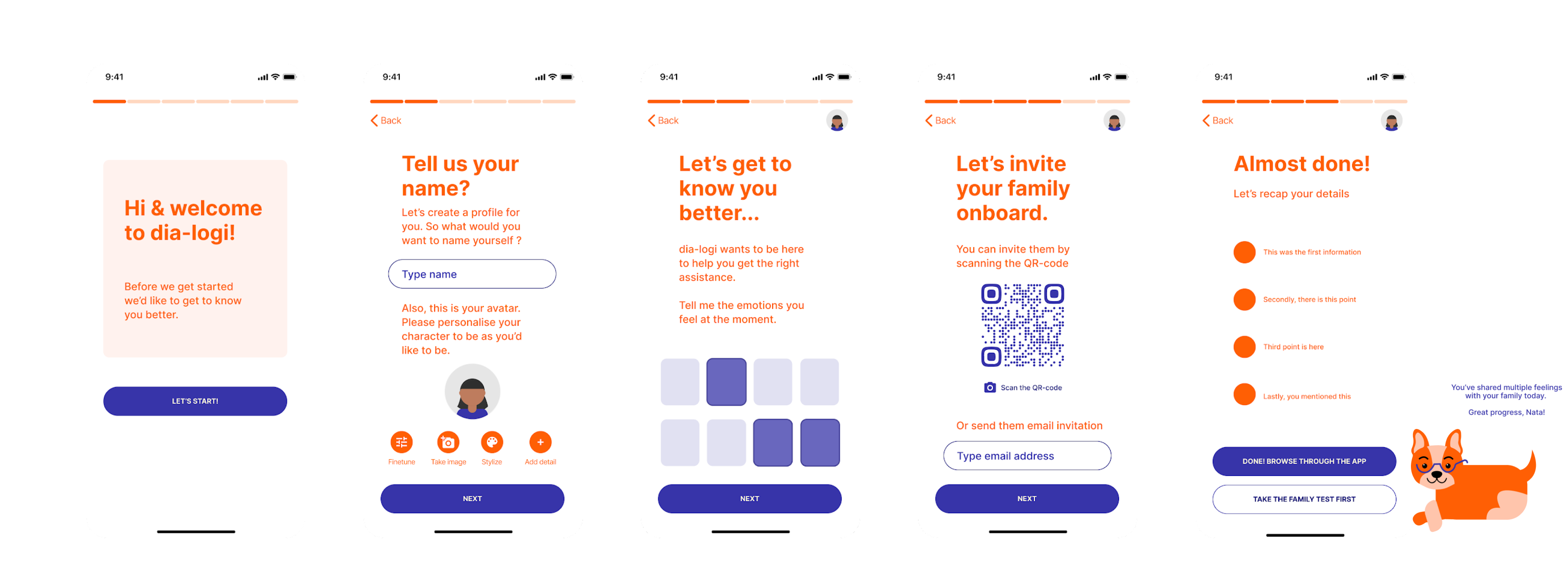
Example 1: Doll house. a game where family members craft the layout of their home and then, each on their own, place the family members within the house, describing what they are doing. By comparing the results, they get a better idea of how they perceive each other in the everyday life.
Example 2: Spin the Wheel. The family members spin the wheel, and answer a question on the feeling the wheel landed on. All the members can contribute from their own devices and spaces. The Wheel allows the family to map their feeling over time.
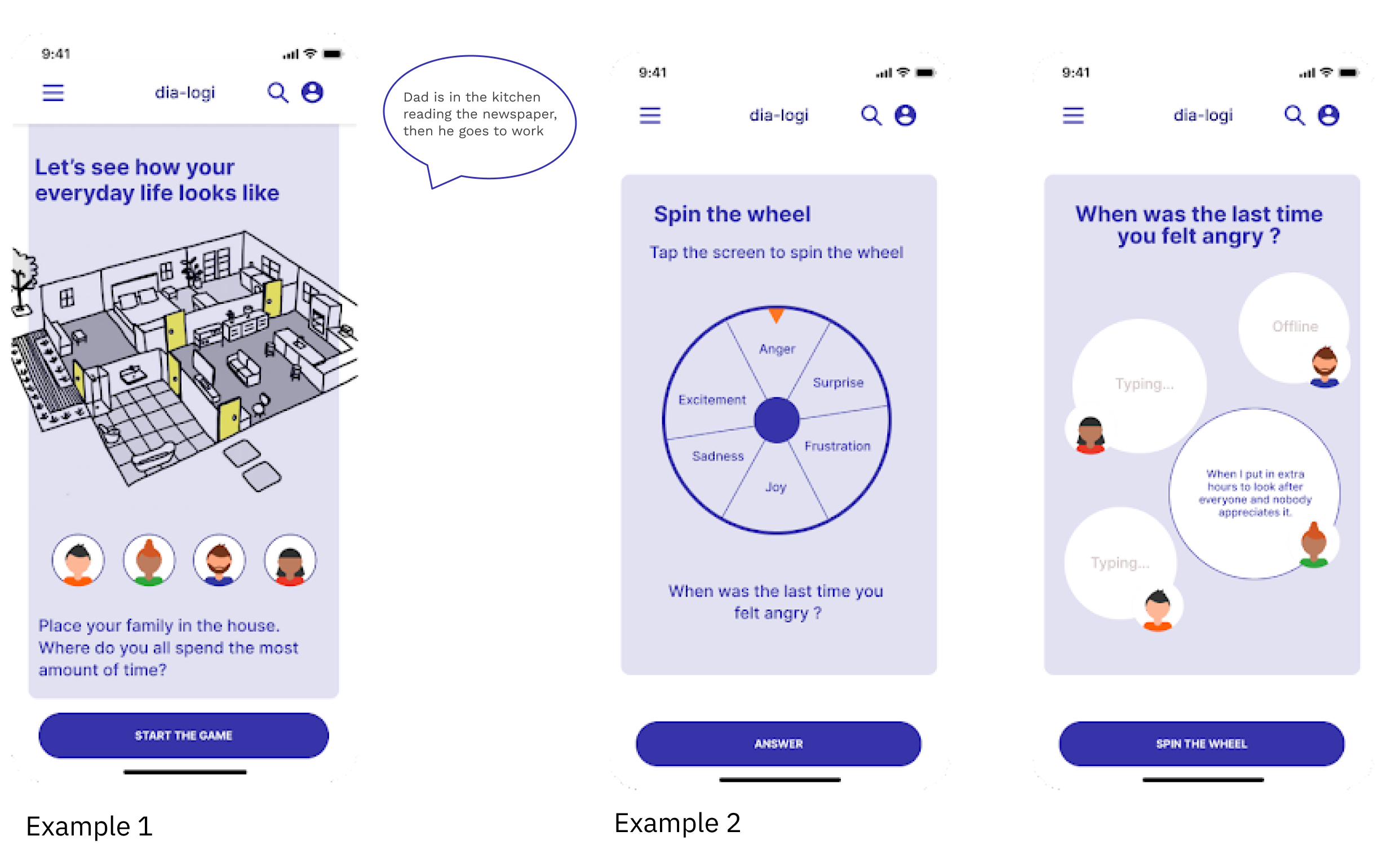
Example 3: Emotions Card Game.Each family member is given 7 random object cards. Each turn, one player gets an emotion card, and the other players have to find an object from their deck that they think could elicit the feeling in the player who has the emotion card. That player, without knowing who offered which object card, chooses one that they think is the best match. Family members learn to empathise and explain emotional cause-effect.
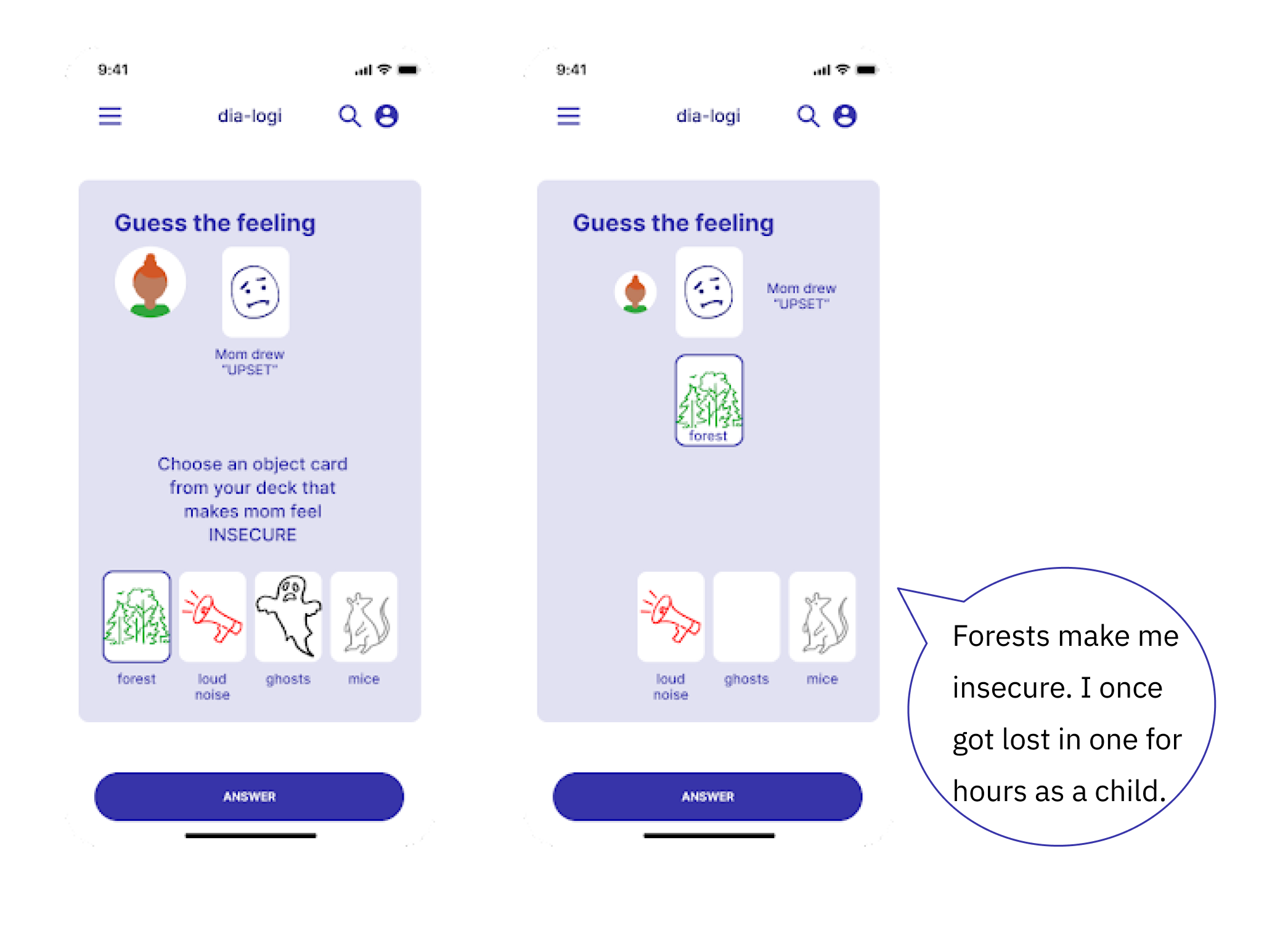
Wellbeing dashboard allows parents to track the data the app has collected, and monitor changes in mood and other insights. In the dashboard, they also find suggestions on what to do next - what tool they could try, or whether they could try to include one family member more.
Taking the step towards contacting therapy providers is made as easy as possible. There are tests that help determine suitable approaches, and links to pages where users can find and contact therapists.
Dia-logi has collected much information of the family’s situation. The site offers an overview summary that the users can give to the therapists when they contact them, and more detailed data that can be used later when a therapy relationship has been established.

